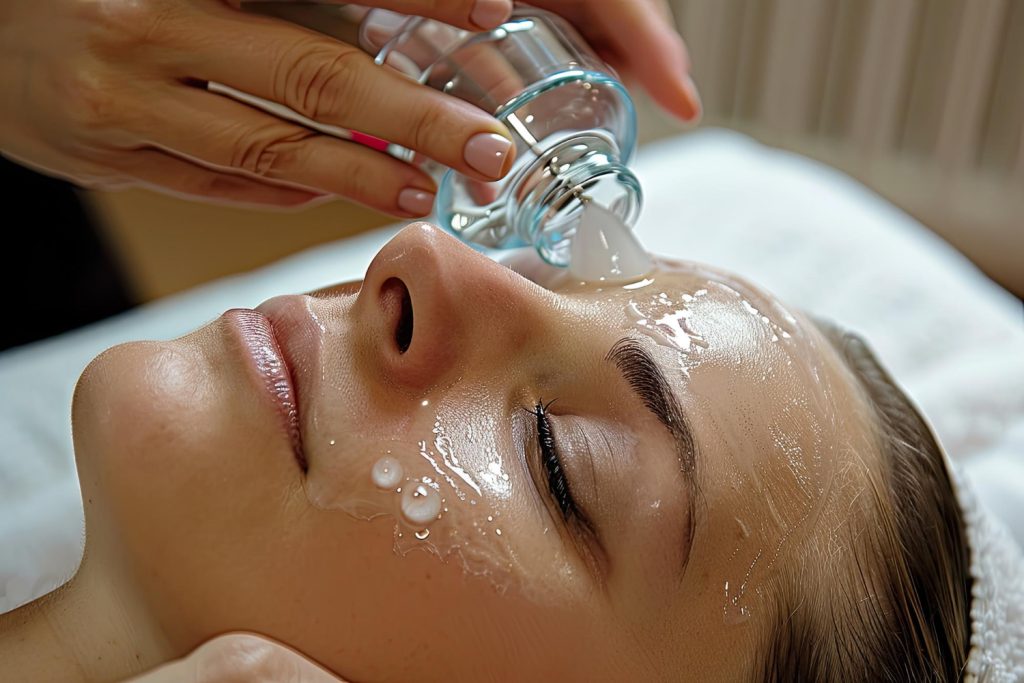Everything You Need to Know About Hydrating Facial Treatments

Hydrating facials are unique skincare treatments designed to make your skin feel soft and look radiant. Unlike facials that target acne or wrinkles, hydrating facials focus on replenishing moisture in your skin, which is especially beneficial for those with dry skin. In this blog, we’ll explore what hydrating facials are, their benefits, and how you can even try one at home.
What are Hydrating Facials?
Hydrating facials are treatments that infuse your skin with moisture. They use products containing ingredients like hyaluronic acid, which helps retain water in your skin. The hydration facial treatment process typically involves cleansing your face, gently exfoliating to remove dead skin cells, and applying special masks and serums. These steps leave your skin feeling refreshed and full of moisture.
Who Should Consider Hydrating Facials?
While hydrating facials are suitable for everyone, they are particularly beneficial for individuals with dry skin. If your skin feels tight or appears dull, a hydrating facial can help. People frequently exposed to cold weather or air conditioning can also benefit, as these conditions can dry out your skin. Even those with sensitive skin usually find hydrating facials gentle enough for their needs.
Hydrating Facial vs. Moisturizing Facial
Although hydrating and moisturizing facials may sound similar, they serve different purposes. Understanding these differences can help you choose the right facial for your skin’s needs.
Hydrating Facial |
Moisturizing Facial |
|
This type of facial adds water to your skin, using ingredients like hyaluronic acid to attract and retain moisture. It’s ideal for dry and dehydrated skin, aiming to increase the skin’s water content and give it a plump, fresh appearance. |
In contrast, moisturizing facials focus on locking in moisture. They use oils and creams to create a protective barrier on the skin’s surface, preventing water loss and maintaining the skin’s natural moisture balance. Moisturizing facials are excellent for all skin types, especially those prone to dryness. |
What to Expect During a Hydrating Facial
A hydrating facial treatment is a relaxing experience. It begins with cleansing your face to remove any dirt or makeup, followed by gentle exfoliation to clear away dead skin cells. Then, a hydrating mask or serum is applied to deeply moisturize your skin. The treatment concludes with a soothing massage and a moisturizer to seal in the hydration.
Benefits
Soft and Smooth Skin: Hydrating facials leave your skin feeling soft and smooth by adding ample moisture.
Eliminates Dry Patches: Hydrating facials for dry skin eliminate dry patches, leaving your skin looking healthy.
Healthy Glow: These facials impart a vibrant, fresh glow to your skin.
Balanced Hydration: Regular treatments help maintain balanced hydration, crucial for overall skin health.
Are There Any Side Effects of Hydrating Facials?
Most people can enjoy hydrating facials without any issues. Occasionally, your skin might be slightly red or irritated, but this usually subsides quickly. If you have very sensitive skin, inform the aesthetician so they can use gentle products. If you experience any adverse reactions, consult a dermatologist.
Popular Hydrating Facial Treatments
There are several hydrating facials that are popular. These includes:
- Hyaluronic Acid Facial: Uses hyaluronic acid to deliver intense moisture.
- Aloe Vera Facial: Ideal for sensitive skin, using aloe vera to soothe and hydrate.
- Collagen Facial: Combines hydration with anti-aging benefits.
- Vitamin C Facial: Brightens and moisturizes the skin.
Guide For At-Home Hydrating Facial: DIY Hydrating Facial Recipes
Planning on enjoying a hydrating facial at home? You can do so with these simple ingredients. Here are some DIY hydrating facial recipes:
1. Honey and Yogurt Mask
- Ingredients: 1 tablespoon of honey, and 2 tablespoons of plain yoghurt.
- Instructions: Mix the honey and yoghurt. Put it on your face. Leave it for 15–20 minutes. After that, wash it with warm water.
2. Avocado and Olive Oil Mask
- Ingredients: 1 ripe avocado, 1 tablespoon of olive oil.
- Instructions: Mash the avocado and mix it with the olive oil. Put it on your face. Leave it for 15–20 minutes. After that, wash it with warm water.
3. Cucumber and Aloe Vera Mask
- Ingredients: 1/2 cucumber, 2 tablespoons of aloe vera gel.
- Instructions: Blend the cucumber and mix it with the aloe vera gel. Put it on your face. Leave it for 15–20 minutes. After that, wash it with warm water.
4. Banana and Honey Mask
- Ingredients: 1 ripe banana, 1 tablespoon of honey.
- Instructions: Mash the banana and mix it with the honey. Put it on your face. Leave it for 15–20 minutes. After that, wash it with warm water.
5. Oatmeal and Milk Mask
- Ingredients: 2 tablespoons of oatmeal, 3 tablespoons of milk.
- Instructions: Mix the oatmeal and milk. Let it sit for a few minutes. Put it on your face. Leave it for 15–20 minutes. After that, wash it with warm water.
Conclusion
Hydrating facial treatments are an excellent way to keep your skin soft and glowing. Whether you opt for a professional spa treatment or a DIY facial at home, these treatments provide essential moisture to your skin, promoting overall skin health. By understanding the different types of hydrating facials and their benefits, you can choose the optimal option for your skin. If you have any skin concerns, consult a skin care professional for personalised advice on hydrating facial treatments.
